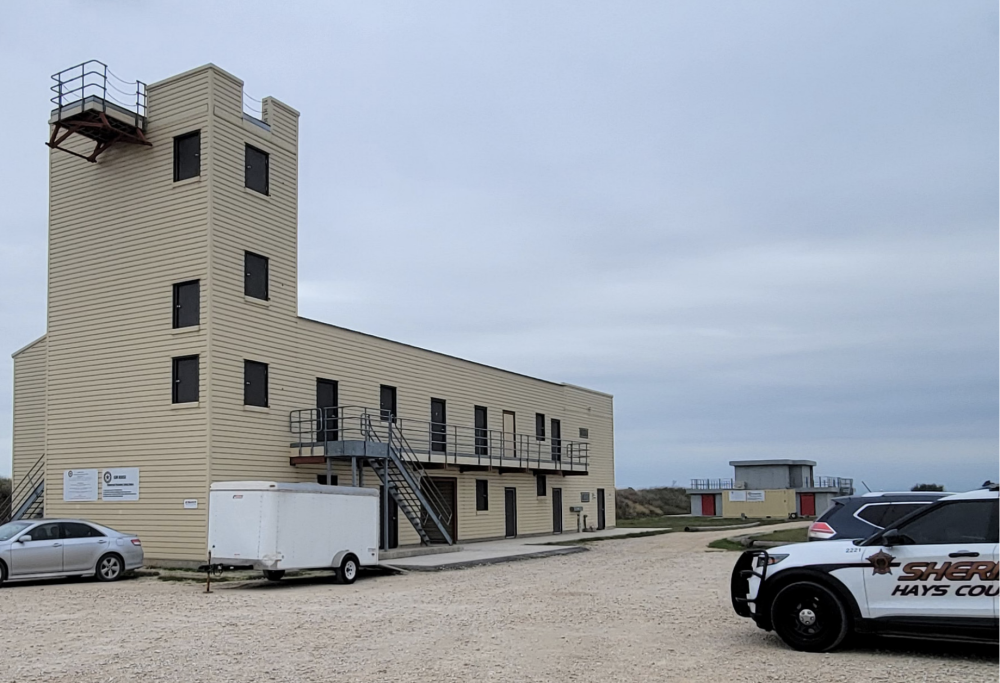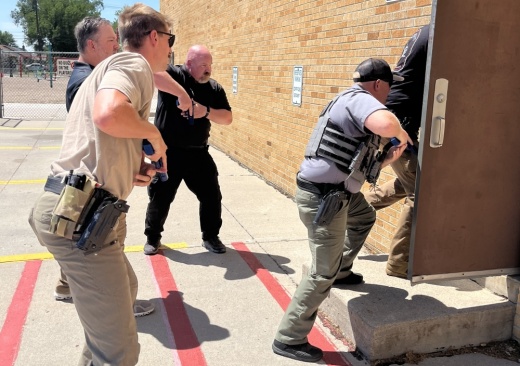With $25 million in recent funding from the state legislature, ALERRT officials are looking to build and enhance the program’s training facilities, Director of External Relations James Keith said.
The backstory
ALERRT was created in 2002 as a partnership between Texas State, the San Marcos Police Department and the Hays County Sheriff’s Office after a trooper was killed in the line of duty, Keith said.
“It prompted officers in that area to say, ‘You know what? We need to develop some standard protocols on how we respond to active shooter situations,’” Keith said.
Following the Sandy Hook tragedy in 2012, the Federal Bureau of Investigation was advised to develop active shooter training and programming.
In 2013, the FBI declared ALERRT as the national standard, Keith said. Now, the program has dozens of partnerships with various law enforcement agencies.
What’s changing?
ALERRT has two facilities near San Marcos for on-site training and research.
With $25 million in new state funding from the Texas legislature, ALERRT officials will enhance its training facility near the San Marcos Regional Airport, Keith said. According to Texas State’s 2025-2035 campus master plan, officials propose consolidating ALERRT operations and training at a site near the airport.
The project is proposed to begin construction this year and is expected to wrap up by 2035, according to the campus master plan.
“Our long-term goals are to provide classroom spaces out there [and] dormitory spaces,” Keith said. “We're very fortunate and grateful to the legislature who allocated that funding, and we're hoping to see dirt move sometime this year.”

How it works
A team of researchers who study active shooter situations help the program continuously evolve, as they identify correlations or patterns between incidents to modify ALERRT’s training, Keith said.
“That's really what makes ALERRT stand out from other organizations and programs that offer active shooter training,” Keith said. “Ours is research-based. It's constantly evolving, and we're always updating our curriculum to make sure that we're staying ahead of the game.”
ALERRT is funded through a mixture of state and federal funding, but the majority of ALERRT’s funding comes from a Community Oriented Policing Services program, Keith said. As ALERRT has grown, the program has also developed financial partnerships in other states, he said.
Through regional managers and more than 300 adjunct instructors, ALERRT training has been delivered across all 50 states in the U.S., Keith said.
“We are actively receiving requests from law enforcement; first responders in the U.S. and outside the U.S. who are saying, ‘Hey, we want this training,’” Keith said.
While it costs money to provide trainings, ALERRT doesn’t charge organizations. To help execute classes and continue research, officials are constantly looking for grants and new funding sources to expand the number of courses the program provides, Keith said.
“We want to be in every state. We want to expand our reach internationally,” Keith said. “What that requires is funding.”
Managing the impact
Fourteen different courses make up ALERRT’s training catalog. Through ALERRT’s Train the Trainer course, law enforcement participants become certified instructors at the end of the class, Keith said.
While it’s hard to quantify the number of people the courses have affected, Keith estimated over 300,000 people have directly benefited from the program.
“That number continues to grow,” Keith said. “We're putting on 3,000 classes—directly and indirectly—every year.”
As the types of attacks have evolved beyond active shooters, Keith said the ALERRT program adjusts to those changes.
“We want you to have that basic, standard, consistent guideline on how to respond to an active shooter,” Keith said. “But we also want you to be able to have that same basic standard on how to respond for any attacker.”
Why it matters
In addition to training law enforcement and first responders, ALERRT also provides a Civilian Response to Active Shooter Events course.
“We feel confident that what we do does make a difference,” Keith said. “Not only are we teaching folks to stop an active attack, we are now training people, first responders [and] law enforcement to save lives.”





